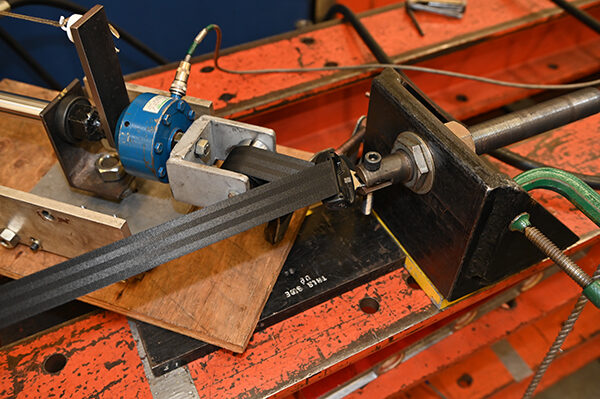Testing the Effect of the Crash Locking Tongue – A Series Begins

Testing was performed on new seat belt assemblies to investigate the effect of the Crash Locking Tongue design on reducing the breaking strength of the webbing. The type-2, dual-pretensioner (sill-end and retractor) assembly features 47mm wide polyester webbing, and a dual-locking, switchable load limiting retractor. Three-point anchoring held the seat belt webbing in a “V” shape with an included angle of approximately 45 degrees. The end of the lap belt webbing was preloaded in tension. The latch plate tongue was held by a clevis pin. The end of the shoulder belt webbing was held by a split-drum grip secured to a hydraulic cylinder. The shoulder belt web-grip displacement rate was between approximately 89 and 94mm/s. Data was sampled at 1000Hz.
Similar testing is planned to contrast these results to a cinching latch plate design found in a late-model, full-size domestic truck and another in a late-model domestic passenger van.

